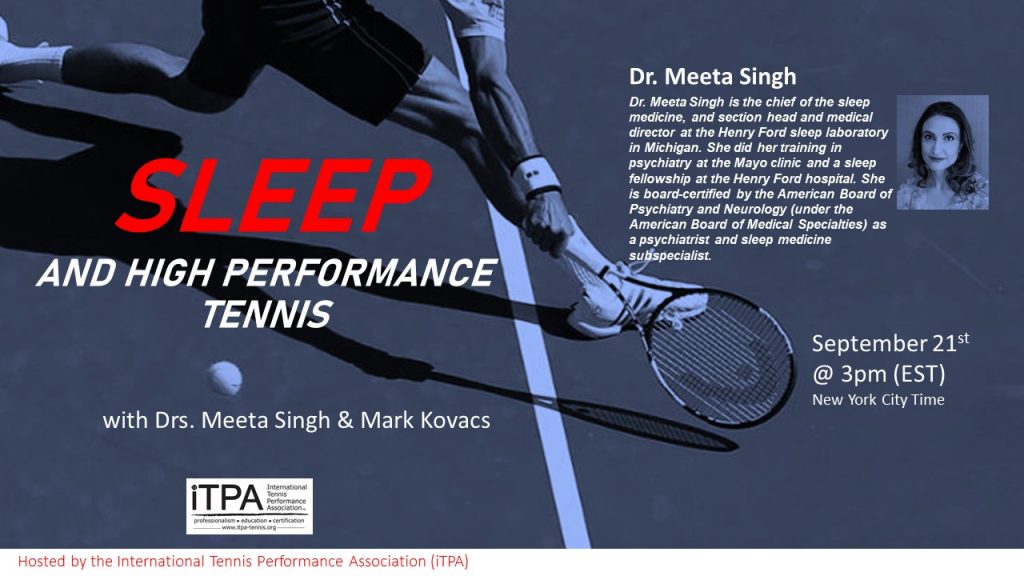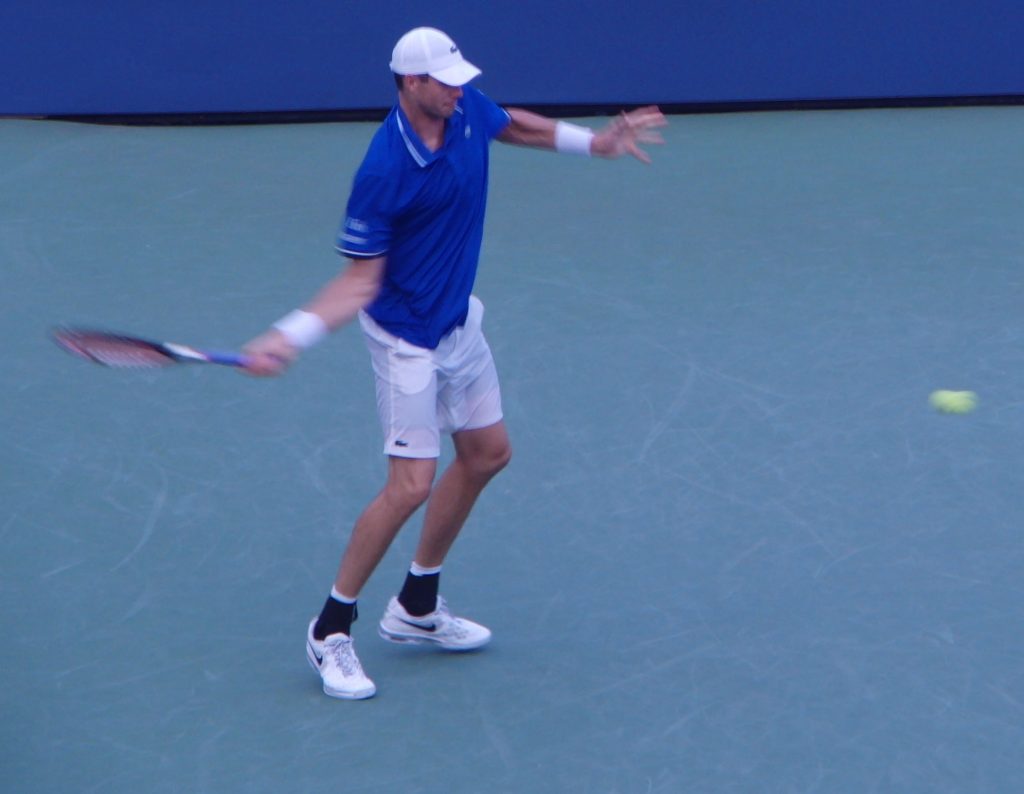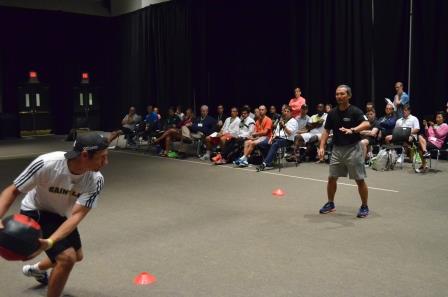MEMBER LOG IN
Categories
Links
Category Archives: Performance
The Best High Performance Tennis Academies In Europe…Reflections On A Coaches Tour Of Europe
This article has been adapted from Kovacs Institute, but we thought iTPA members would find it useful.
Over the last two years the Kovacs Institute has been fortunate to evaluate nearly two dozen of the top junior development tennis training environments. In 2022 it was going to major academies, training centers and visiting with top coaches in Florida. In 2023 it was evaluating the top training environments in Spain, France and Italy. The 2023 trip included nearly 20 top junior development coaches who work daily developing young talent from 6-18 years of age. The main goals of the tour were:
- To learn from some of the best tennis coaches, tennis teachers and academies across the spectrum of elite level junior tennis development.
- To better understand the level of the best junior players in the world at the various stages along the junior development pathway.
- Look for commonalities among the best coaches and why they have been successful for multiple decades.
Click the pdf link below for the full article!
SLEEP AND TENNIS PERFORMANCE: A WEBINAR WITH DR. SINGH
The topic of sleep is one of the most important for all athletes. However, for tennis athletes it becomes even more important due to the uniqueness of the tennis schedule, how you may play multiple matches in a day, at different times and in different time zones. All these factors results in challenges when it comes to optimizing sleep for tennis performance. In this iTPA Webinar, we have Sleep expert Dr. Meeta Singh who provided a great overview of sleep for athletes with a focus on tennis. This webinar also included a series of questions from the live audience as well.

Here is the link to the hour long webinar:
Dr Meeta Singh is a sleep doctor whose work and research focuses on “Coaching the sleep muscle” to help maximize performance in both individual athletes and sports teams.
She is the chief of the sleep medicine, and section head and medical director at the Henry Ford sleep laboratory in Michigan. She did her training in psychiatry at the Mayo clinic and a sleep fellowship at the Henry Ford hospital. She is board-certified by the American Board of Psychiatry and Neurology (under the American Board of Medical Specialties) as a psychiatrist and sleep medicine subspecialist. She is a member in good standing of the American Academy of Sleep Medicine the Sleep Research Society. She has served as a consultant for multiple NFL, MLB, NHL and NBA teams. She has also worked with college sports teams. As part of this service, Dr. Singh performs athletic sleep assessments with personalized prescriptions for better sleep. She also helps sports teams and athletes with their travel management with a focus on addressing sleep deprivation and jet lag and maximizing athletic performance. Her passion is lecturing and educating teams and athletes about the benefits of sleep on performance.
Posted in Performance, Sleep
Leave a comment
Simple Exercises That Can Be Done To Potentially Reduce Injuries And Increase Performance
Here is a great video where three of our ITPA professionals (Dean Hollingworth, CTPS, MTPS; Jonny Fraser, CTPS, MTPS and Trevor McPherson, CTPS) provide over 200 adult competitive tennis players with some important exercises that can be incorporated into weekly programs. This was a presentation at the Tennis Congress. Watch this video to get some ideas on how best to perform these exercises.
What are the Physiological Responses to Tennis Tournaments?
By Joshua Colmar, iTPA Intern
It is known that tennis is a very demanding sport. Tennis movement is a combination of eccentric-concentric muscle action; all movements are rapid and explosive and include accelerations, decelerations, stretches, jumps and strokes. Continue reading
Posted in Fatigue, Performance, Physiological Responses
Leave a comment
Physical and Mental Demands of Common Tennis Drills
By Oliver Statham, CTPS iTPA Staff
Elite senior and junior players usually have training time constraints due to either school or year-round tournament commitments. Therefore, understanding the physical and mental demands of drills within a practice session is fundamental to delivering a well-structured periodized program for optimal physical and technical development. Continue reading
Posted in Article, Drills, Matchplay, Mental Skills, Performance
Leave a comment
Presentation Slides From Performance Lectures at 2014 Tennis Medicine & Performance Conference
On July 19th and 20th, 2014 the iTPA and STMS combined to host the 2014 Tennis Medicine & Performance Conference in Atlanta, Georgia (USA). This great 2 day education event brought together experts in all aspects of tennis medicine, science, performance training and coaching. As many of the iTPA family could not attend in person we are providing some resources for our members in over 24 countries. In this post you will see a selection of the performance focused presentation slides.
If you are interested in viewing 10 of the most well-attended sessions during the conference, please visit the link below with the ability to subscribe to over 7 hours of video from the conference 2014 Tennis Medicine & Performance Conference Videos
Physical and Physiological Demands of Tennis
By Josh Bramblett, iTPA Staff
The modern game of tennis continues to progress and evolve. There are numerous ways for any player at any skill level to participate. The physicality of tennis continually grows along with the demands placed on the body. The focus of the game has changed from finesse to power and speed. Continue reading
The Effect of Grip Size on the Hitting Force During a Soft Tennis Forehand Stroke
Here is a very interesting research article looking at the influence of grip size on hitting force. This study just focused on the forehand, but the information is very interesting and useful for individuals who work with tennis players both from a performance perspective (increased racket head speed and force) as well as an injury prevention perspective (wrist/elbow/shoulder injuries). Continue reading
Posted in Article, Grips, Performance
Leave a comment
The Runaround Forehand Footwork Drill – Young Athlete
As the runaround forehand is a major potential weapon for all athletes, developing the appropriate footwork pattern at a young age should be a goal of any coach Continue reading
Posted in Growth & Development, Movement, Performance, Power, Speed & Agility, Training, Video
Leave a comment


